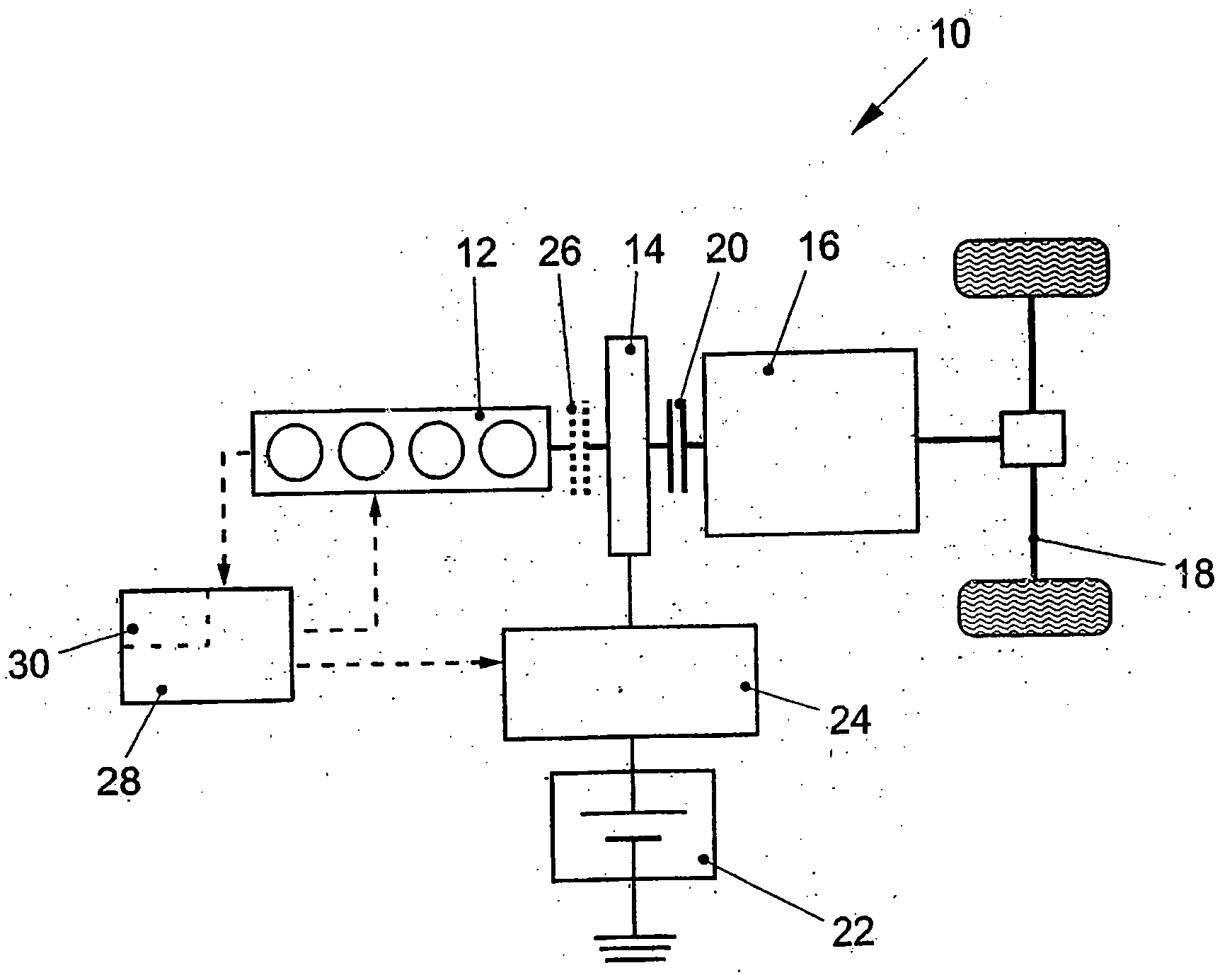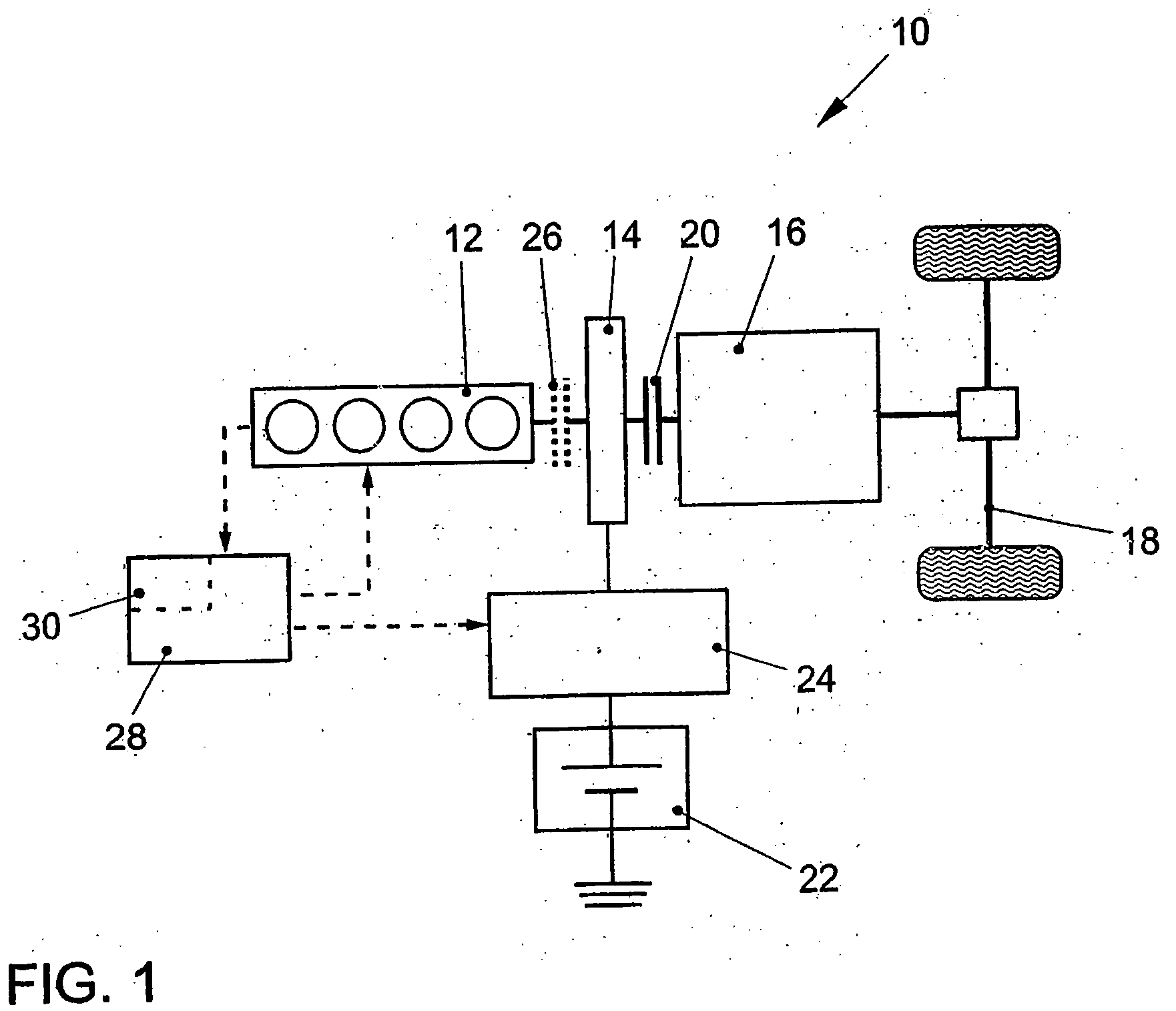Method for Controlling an Overrun Condition of a Hybrid Vehicle and Hybrid Vehicle
a hybrid vehicle and overrun condition technology, applied in the direction of machine/engine, process and machine control, motor/generator/converter stopper, etc., can solve the problem of low efficiency, low mixture formation quality, and build-up of engine torque, so as to reduce the fuel consumption
- Summary
- Abstract
- Description
- Claims
- Application Information
AI Technical Summary
Benefits of technology
Problems solved by technology
Method used
Image
Examples
Embodiment Construction
[0020]In FIG. 1, 10 denotes on the whole a parallel hybrid drive unit of a hybrid vehicle. The vehicle is driven alternatively or simultaneously by a conventional combustion engine 12 (Otto or diesel engine) and an electric motor 14, both of which act on the same shaft, e.g., on the crank shaft of combustion engine 12. Electric motor 14 may be connected to the engine crankshaft in various manners. Thus, electric motor 14 may be connected to the crankshaft directly or via a clutch, or via a belt drive, a toothed belt, a gear unit or another friction- and / or form-locking connection. Combustion engine 12 and electric motor 14 are connected to an indicated drive train 18 via a transmission 16, e.g., a manually shifted transmission. The drive shafts of combustion engine 12 or of electric motor 14 are decoupled from transmission 16 via a clutch 20, which may be opened by the driver by operating a clutch pedal and which is closed when the clutch pedal is not operated.
[0021]Electric motor 1...
PUM
 Login to View More
Login to View More Abstract
Description
Claims
Application Information
 Login to View More
Login to View More - R&D
- Intellectual Property
- Life Sciences
- Materials
- Tech Scout
- Unparalleled Data Quality
- Higher Quality Content
- 60% Fewer Hallucinations
Browse by: Latest US Patents, China's latest patents, Technical Efficacy Thesaurus, Application Domain, Technology Topic, Popular Technical Reports.
© 2025 PatSnap. All rights reserved.Legal|Privacy policy|Modern Slavery Act Transparency Statement|Sitemap|About US| Contact US: help@patsnap.com



